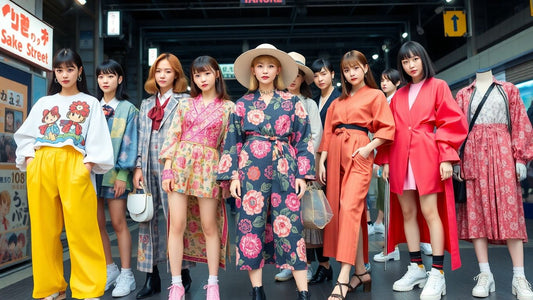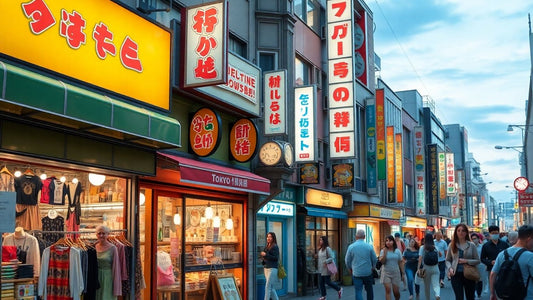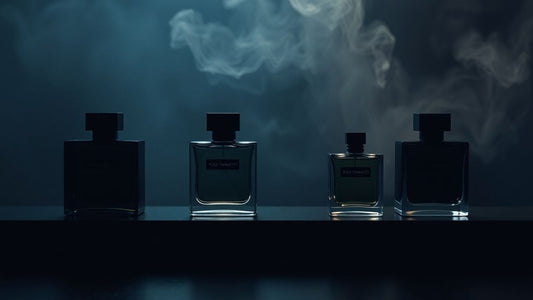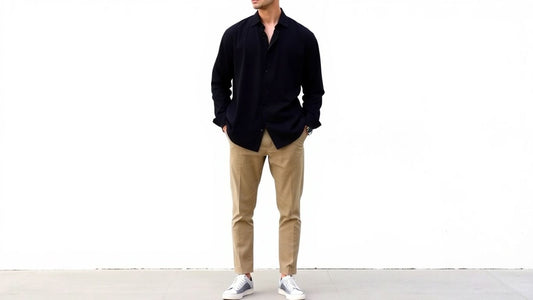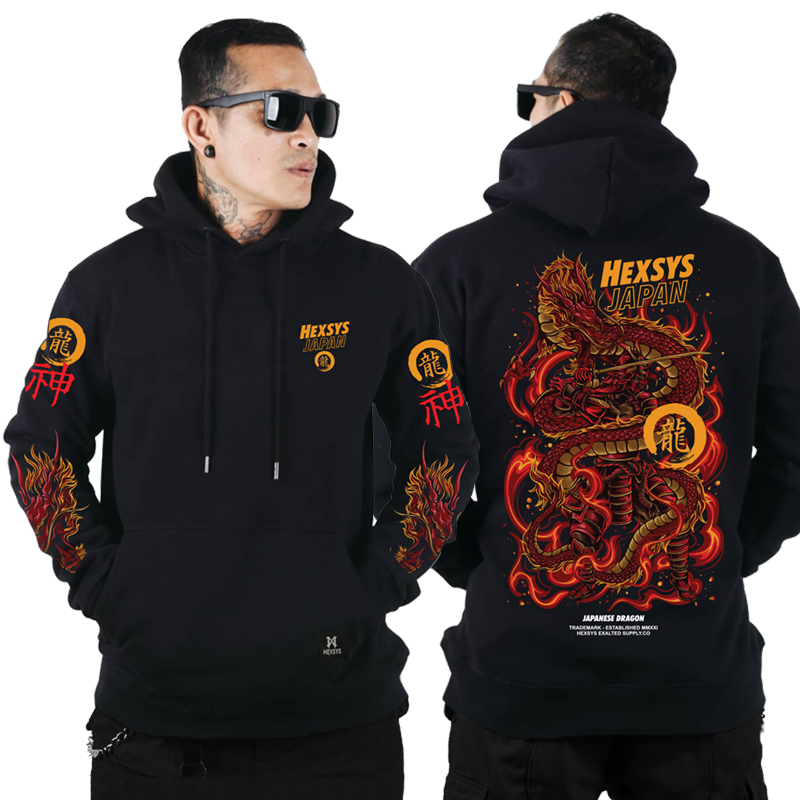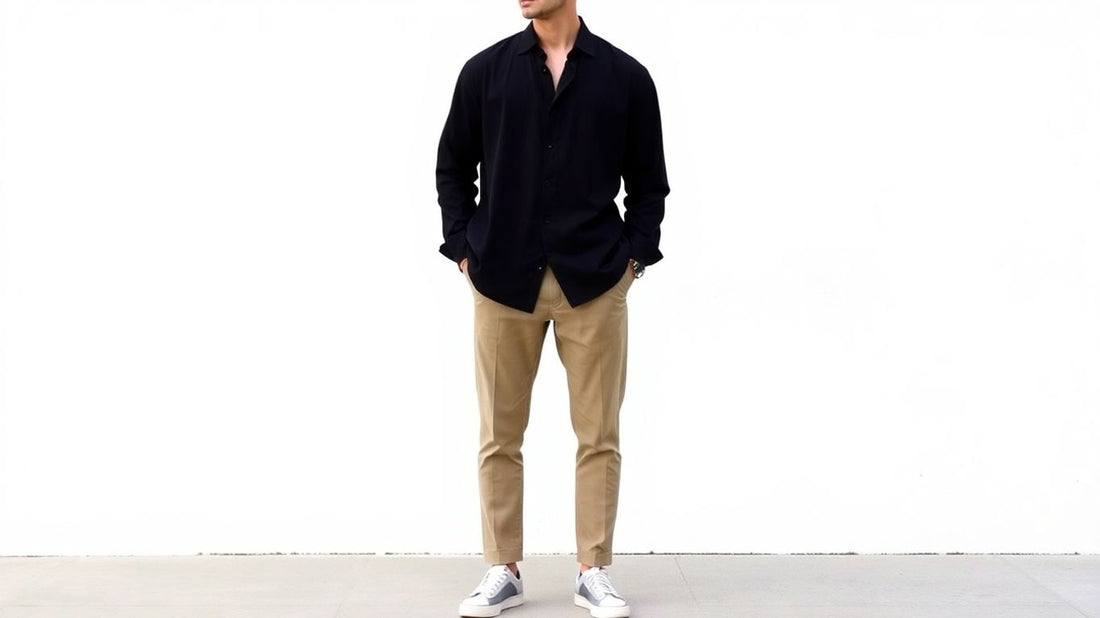
How to Style a Black Japanese Shirt for a Modern Minimalist Look
If you're looking for a way to keep your wardrobe simple but still interesting, a black Japanese shirt is a solid choice. This piece blends traditional style with a modern, minimalist feel. You don’t have to be a fashion expert to pull it off—just a few tweaks and you’ll have a look that’s clean, sharp, and easy to wear every day. Whether you’re heading out for coffee or need something a bit more polished for work, this shirt can do it all. Here’s how you can style a black Japanese shirt for a modern minimalist look without overthinking it.
Key Takeaways
- Pick a black Japanese shirt in a relaxed fit and comfortable fabric for a simple base.
- Stick to neutral or muted colors in the rest of your outfit to keep things minimalist.
- Pair the shirt with loose trousers or jeans and low-key sneakers for an easy casual look.
- Try layering with lightweight jackets or cardigans and play with different textures for extra interest.
- Add subtle accessories like a basic watch or plain bag—nothing too flashy, just enough to finish the outfit.
Embracing Minimalism with a Black Japanese Shirt

Wearing a black Japanese shirt can totally refresh your closet and make getting dressed feel easier. The simple look is pleasing, but it's not easy to get right without some mindful choices. So here’s how to go about it.
Choosing the Right Fit and Fabric
- Boxy, relaxed cuts offer comfort but also stay true to the Japanese minimalist vibe. Oversized fits work well, letting air flow in summer but they layer nicely in cooler months too.
- Natural fabrics like crisp cotton, linen, or a light blend give structure and breathability. These materials age well, fitting the minimalist motto of quality over quantity.
- Pay attention to the drape and length of the shirt—shoulders dropped just slightly, sleeves either short or hitting mid-arm for a nod to classic tailoring.
Sometimes, the fabric does all the talking—choose one that feels good on your skin, and you’ll want to wear it all the time.
Understanding Minimalist Color Palettes
Minimalism works best when you stick to neutral, earth-inspired colors. Pair that black shirt with other shades like off-white, sand, or deep navy. Here’s a quick table showing combinations that almost never fail:
| Base (Shirt) | Bottoms | Layer/Accessory |
|---|---|---|
| Black | Khaki | Tan crossbody bag |
| Black | White | Brown sandals |
| Black | Deep olive | Ivory bucket hat |
- Avoid bold patterns. Instead, experiment with solid blocks of color or pieces with very subtle texture.
- You don’t need much—one contrasting tone in your outfit is enough to keep it interesting.
Incorporating Subtle Traditional Details
Adding a small nod to tradition can tie your look together and keep it from feeling flat:
- Look for shirts with hidden plackets, sashiko stitching, or slightly asymmetrical cuts.
- A subtle motif, like a single embroidered character or tiny hem tag, brings character without being loud.
- If you’re adding layers, try combining long tees with oversized shirts or cropped jackets—mixing volumes and natural fabrics feels very current for 2025.
A simple Japanese shirt can say a lot, if you’re mindful about fit, fabric, and a touch of tradition. Minimalism isn’t about being boring—it’s about letting each choice stand out on its own and trusting that less can really be more.
Creating Effortless Casual Looks
Styling a black Japanese shirt for an easygoing day out really doesn't have to be complicated. Just focus on simplicity, comfort, and some clever matches. A laid-back outfit can still look sharp if you get the basics right.
Pairing with Relaxed-Fit Trousers or Jeans
Go for pants that have a bit of room in them—think straight-leg jeans, wide-leg chinos, or even balloon pants if that's your speed. The relaxed fit keeps things casual while letting the shape of the shirt stay the center of attention.
- Straight or wide-leg jeans add balance to the shirt’s shape
- Chinos in olive, tan, or black keep the look cool and understated
- Balloon or cargo pants offer an on-trend, urban vibe
If you want to mix things up, try rolling up the pant cuffs for a little more character. Overly tight trousers can throw off the whole minimalist effect, so skip the skinny fits here.
Complementing with Minimal Sneakers
Your shoes stick out more than you might think. Low-top sneakers in white, black, or muted colors are almost always a safe bet. Avoid anything too flashy—logos, chunky soles, and loud designs can steal focus from your crisp look.
| Sneaker Color | Effect |
|---|---|
| White | Clean and classic |
| Black | Subtle, matches the shirt |
| Off-white | Soft contrast, still quiet |
Slip-ons and retro runners also look good, especially if you want something that's easy to kick off at the end of the day.
Accessorizing with Understated Watches and Bags
If you’re adding things on top, keep them minimal too:
- Leather or canvas crossbody bags: compact and practical
- Slim, simple wristwatches—no flashy dials here
- Small messenger or tote bags in neutral shades
Chunky wallets, large backpacks, and heavy jewelry feel out of place with this vibe. Stick to streamlined shapes and basic colors.
You’ll feel a difference walking around in this sort of outfit—it’s freeing not to fuss with your clothes every five minutes, and somehow you end up looking more put together for it.
Layering Techniques for Modern Appeal

Layering is really what brings out the best in a black Japanese shirt, especially when you want to keep things minimal and modern without looking too basic. With the right layers, you can create dimension and interest, all while sticking to a clean style.
Adding Lightweight Jackets or Cardigans
- Go for thin, relaxed-fit jackets or cardigans in neutral tones like gray, navy, or beige.
- Avoid heavy, bulky materials—something light ensures your black Japanese shirt stays the focal point.
- Look for subtle details, like a straight hem or an open-front cardigan. These little tweaks add personality but still keep it simple.
Wearing a fine cardigan over a crisp Japanese shirt feels comfortable, allowing you to look styled but not forced. It’s my go-to for cool mornings when I don’t want to overthink what to wear.
Monochrome Layered Outfits
Monochrome outfits always look sharp and unassuming. Layering shades of black, charcoal, and dark gray with your black Japanese shirt creates a smooth, fluid look.
Here's a basic monochrome setup:
- Black Japanese shirt (base)
- Charcoal-gray light jacket (mid layer)
- Slim black or gray trousers (bottom)
- Black or gray sneakers (shoes)
| Layer | Color | Texture |
|---|---|---|
| Shirt | Jet Black | Smooth |
| Jacket | Charcoal | Matte |
| Trousers | Black/Gray | Wool/Cotton |
| Sneakers | Black/Gray | Leather |
Keep textures slightly different for visual separation, but don’t overcomplicate it—think clean, easy, and muted.
Playing with Textures for Depth
When you wear all dark or similar colors, texture is your friend. Varying surface feels keeps everything from blending together. Here’s where to start:
- Mix a cotton shirt with a linen jacket or merino wool cardigan.
- Try trousers with a faint herringbone or simple twill weave.
- Swap in a glossy belt or leather watch for a quiet contrast.
Mixing textures isn’t about standing out—it’s about shaping an outfit that feels thoughtful, without crossing into busy territory.
Elevating the Black Japanese Shirt for Smart Occasions
Looking to dress up that black Japanese shirt for something fancier than your usual hangouts? You absolutely can. It's all about picking the right pieces to go with it, so everything looks polished but not fussy. Here's your cheat sheet for getting it right—simple, modern, and a bit different from the regular dress shirt-and-trousers deal.
Combining with Tailored Trousers
- Choose trousers in slim or straight cuts—nothing too baggy
- Go for materials like wool or high-quality cotton for that sharp look
- Stick to a muted palette: opt for charcoal, navy, or even off-white
| Trouser Color | Works Best With |
|---|---|
| Charcoal | Matte fabrics |
| Navy | Subtle texture |
| Off-white | Crisp summer fabrics |
Styling with Sleek Outerwear
Throwing on the right jacket can quickly make your shirt look more dressed-up. Think:
- Structured blazers in neutral shades, no loud patterns
- Minimalist trench coats for rainy days
- A fine-knit cardigan for something softer but still smart
If you want to stand out just a little, try a jacket with a subtle detail, like a hidden pocket or tonal stitching. Little touches go a long way without feeling like you're trying too hard.
Choosing Statement Footwear
Smart occasions are the perfect chance to let your shoes speak up. Build your look with clean, minimal basics, then finish with:
- Sleek black or brown derbies
- Polished loafers with little or no hardware
- Simple leather sneakers (all-black or white)
Instead of over-accessorizing, try to keep everything else pared back, just as you would in modern Japanese men's fashion. Shoes can do a lot of the heavy lifting if the rest of your outfit is simple.
Pulling together a smart look with a black Japanese shirt is more about good fits, strong lines, and quiet details than piling on stuff. Go for fewer, better pieces and you can't really go wrong.
Merging Traditional Japanese and Modern Minimalist Styles
Blending tradition with the fine lines of modern minimalism isn’t just about looks; it brings a quiet confidence to your wardrobe. Here’s how to make it feel natural, not forced.
Introducing Kimono or Haori Layers
Adding a kimono or haori over your black Japanese shirt adds traditional structure and dramatic flow. Stick with lightweight, unpatterned fabrics in black, charcoal, or off-white to keep things minimal. Modern versions are often cut shorter and left open, making them easy to throw over jeans or relaxed trousers without looking like you’re in costume.
- Go for single-color, collarless kimonos or haori.
- Keep the layer loose, not tight, for easy movement.
- Roll up the sleeves or cuff them for a relaxed, urban touch.
Incorporating Classic Japanese Motifs
Don’t be afraid of subtle traditional details. Classic Japanese patterns or small, symbolic embroidery—like a single crane, wave, or sashiko stitch—can add interest without overpowering the minimalist base. Here’s a quick overview of common motifs:
| Motif | Meaning | How to Style |
|---|---|---|
| Crane | Longevity | Small chest embroidery |
| Waves | Resilience | Minimal sleeve accent |
| Sashiko Stitch | Craftsmanship | Contrasting pocket detail |
- Stick to one motif per outfit.
- Choose neutral or muted thread colors.
- Let the motif be the only decoration.
Balancing Heritage and Contemporary Elements
It’s all about small choices that add depth without crowding your look. Pair the structured lines of traditional Japanese garments with the easy tailoring of modern basics:
- Match a kimono layer with wide, pleated trousers for a nod to both eras.
- Choose modern shoes, but look for tabi-inspired sneakers for a knowing wink at tradition.
- Limit yourself to two traditional elements per outfit to keep things fresh—not costume-like.
If you play it right, you’ll get the best of both worlds: a style that feels unique yet wearable, current but full of story. The key is intention—every piece should feel like it belongs.
Seasonal Styling Inspiration
Finding the right way to wear a black Japanese shirt throughout the year isn’t always simple, but it’s actually kind of fun to see how it fits in all sorts of weather. With a few thoughtful tweaks, you can turn this classic piece into a true year-round staple.
Lightweight Looks for Warm Weather
- Stick with breathable fabrics—look for cotton or linen blends, since those won’t stick to your skin.
- Loose, cropped trousers or even tailored shorts pair easily for that breezy city-in-summer vibe.
- Minimal sandals or slip-on sneakers keep things airy and unfussy.
- Try rolling up the sleeves just once or twice for a casual finish that doesn’t overthink it.
- Accessories like a wide-brim bucket hat and clean-frame sunglasses pull the look together while actually being useful in the heat.
Hot weather sometimes makes it feel like you have no options, but a relaxed black Japanese shirt plays well with lighter textures so you don’t feel overdressed or uncomfortable.
Layered Outfits for Cooler Months
- Toss a fitted turtleneck or fine-knit long sleeve under your shirt—no one will know how warm you are, but you’ll feel it.
- Over the shirt, add a roomy cardigan, quilted vest, or even a simple wool coat to trap heat without piling on bulk.
- Go for heavier trousers like corduroy or wool blends, sticking to the same neutral tones for a clean silhouette.
- Chunky sneakers or streamlined boots work best—keep the color palette understated.
- Scarves and beanies aren’t just for warmth; if you pick minimalist styles, they blend seamlessly into the look.
Transitional Styling Between Seasons
Sometimes the weather throws you a curveball—one day it’s cold, the next you’re in a light sweat. Here’s how to handle it:
- Start with your black shirt as the core piece, left untucked or partially tucked for a laid-back mood.
- Layer a thin mesh or jersey tee underneath; if it gets warm, you can always slip the shirt off.
- Keep a lightweight jacket (like a bomber or nylon coach jacket) on hand for unpredictable chills.
- Swap heavy trousers for loose jeans or chinos, and opt for sneakers that can handle sunshine and a little rain.
- Use a crossbody bag to carry your layers without breaking up the minimal vibe.
| Season | Bottoms | Outer Layer | Accessories |
|---|---|---|---|
| Warm | Cropped trousers | None/light cardigan | Sun hat, sunglasses |
| Cool | Wool pants/cords | Cardigan/coat | Beanie, scarf |
| Transitional | Loose jeans/chinos | Bomber/coach jacket | Crossbody bag, watch |
Adapting your black Japanese shirt is less about chasing trends and more about being comfortable and looking intentional. Pick your layers, focus on fit, and you’ll never feel out of step, season after season.
Finishing Touches with Minimalist Accessories
When you’re building a look around a black Japanese shirt, the accessories are what make everything feel finished—but they shouldn’t shout for attention. Minimalist style is about purpose and intention, so each extra piece you add should work quietly in the background to tie the whole outfit together. The trick is to use accessories for balance, interest, and subtle personality.
Selecting Simple Jewelry and Watches
- Stick with small, geometric or plain silver and black pieces—these won’t distract from the clean lines of the shirt.
- A thin, black leather watch band fits incredibly well here. Avoid oversized faces or extra details.
- If you’re wearing rings, limit it to one per hand and opt for either matte silver or black.
Less is more—choosing one or two simple accessories keeps the look sharp and intentional, and lets the shirt's shape and fabric stand out.
Minimalist Hats and Headwear
- Go for classics, like plain black or charcoal beanies for colder months.
- Try a structured cap in a muted shade—think navy or soft gray.
- If you want something a little different, a small-brimmed felt hat or clean-lined bucket hat fits the urban Japanese vibe and is great for city walks.
Purposeful Use of Scarves and Bags
- Scarves should be lightweight and solid colored—black, off-white, or subtle deep green—nothing patterned or fringed.
- Crossbody and tote bags are the go-to for modern minimalist style. Look for bags in canvas, black leather, or tightly woven fabric. Minimal logos only.
- Furoshiki bags or knot-tied textile pouches can add an understated traditional Japanese touch, bridging classic and modern.
If you want some ideas on pairing these elements for summer, check out these all-black minimalist outfits.
Accessories to Prioritize for a Minimalist Japanese Look
| Item | Color/Material | Style Note |
|---|---|---|
| Watch | Black leather/silver | Slim face |
| Bag | Canvas/Leather | Crossbody/Tote |
| Hat | Black/Gray | Beanie/Cap |
| Scarf (optional) | Neutral color | Lightweight/Solid |
| Jewelry | Matte black/silver | Small/Geometric |
Keep in mind, the best minimalist accessory is one that fits your lifestyle and blends into your routine. When in doubt, keep it simple and functional, and your black Japanese shirt will always be the centerpiece.
Conclusion
Styling a black Japanese shirt for a modern minimalist look isn’t as tricky as it might seem. The key is to keep things simple and comfortable—think clean lines, neutral colors, and just a few well-chosen accessories. Whether you’re pairing it with relaxed trousers, layering with a light jacket, or adding a subtle watch, the goal is to let the shirt do most of the talking. Don’t overthink it. Minimalism is all about making the most out of less, so trust your instincts and wear what feels right. At the end of the day, it’s about feeling good in what you wear and letting your own style come through, even if it’s just with a basic black shirt. Sometimes, less really is more.
Frequently Asked Questions
What makes a black Japanese shirt good for a minimalist look?
A black Japanese shirt is great for a minimalist style because of its simple color and clean design. It often features straight lines, a relaxed fit, and little to no extra decoration. This makes it easy to match with other basic pieces and helps you create a calm, modern outfit.
How do I pick the right size and fabric for a Japanese shirt?
Choose a size that feels comfortable and slightly loose, since Japanese fashion often favors relaxed fits. For fabric, look for natural materials like cotton or linen. These fabrics are soft, breathable, and keep the outfit looking simple and fresh.
What pants work best with a black Japanese shirt for a casual look?
Relaxed-fit trousers or straight-leg jeans work really well. Neutral colors like gray, navy, or beige keep the outfit looking clean. If you want a bit more style, try wide-leg pants or simple chinos.
Can I wear a black Japanese shirt for dressier occasions?
Yes, you can! Pair it with tailored trousers and sleek shoes, like loafers or simple leather sneakers. Add a neat jacket or coat to make the outfit look sharper. Keep accessories simple, like a plain watch or a small bag.
How do I add traditional Japanese touches without making the outfit too busy?
Pick one or two subtle details, like a kimono-style jacket (haori) or a shirt with a small Japanese pattern. Stick to basic colors and avoid too many prints or bright items. This way, the traditional element stands out without taking over the whole look.
What are good minimalist accessories to wear with a black Japanese shirt?
Choose simple items like a plain watch, a small leather or canvas bag, or a thin scarf. Hats in neutral colors or basic sneakers also work well. Try not to wear too many accessories at once—less is more for a minimalist style.
